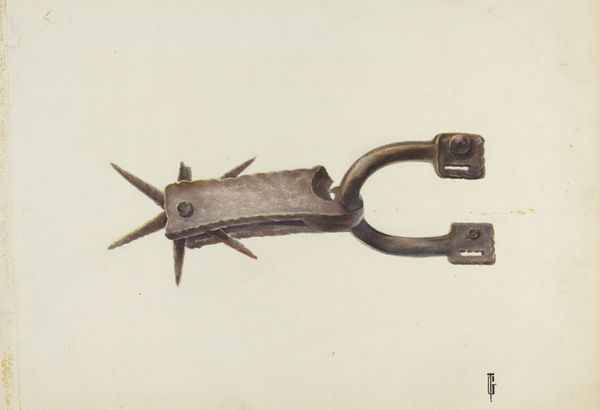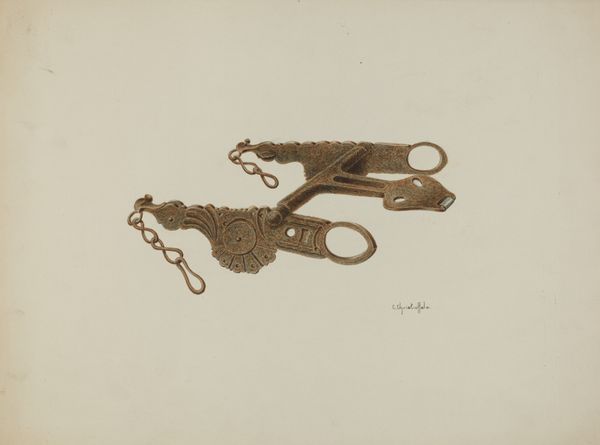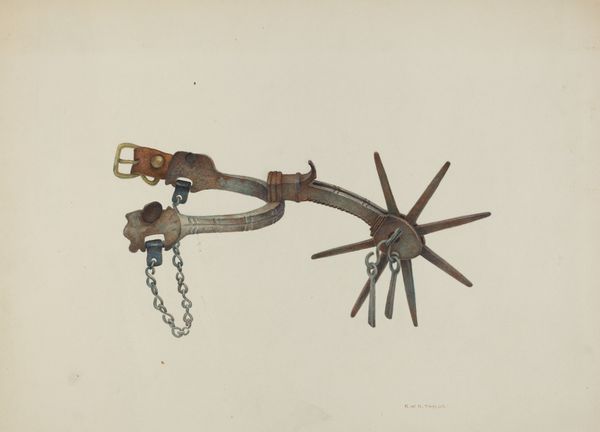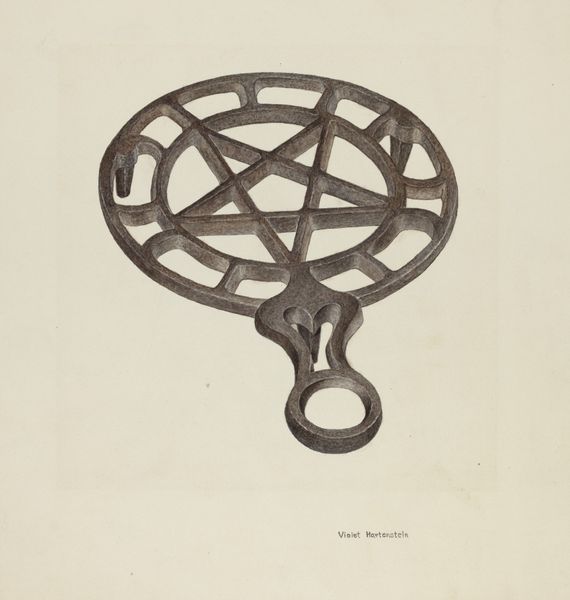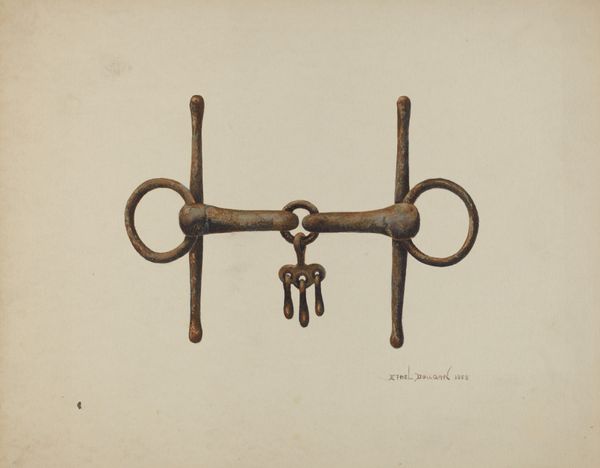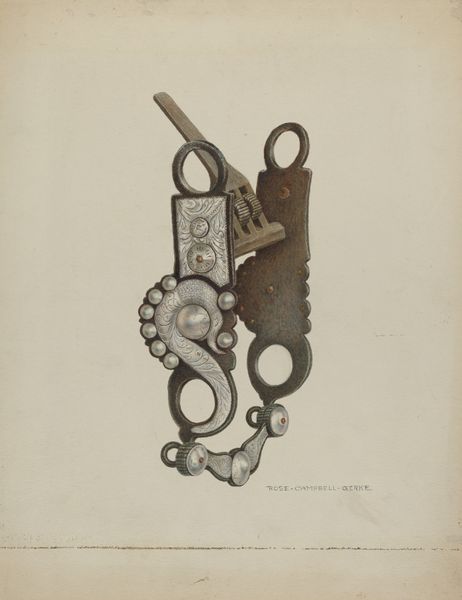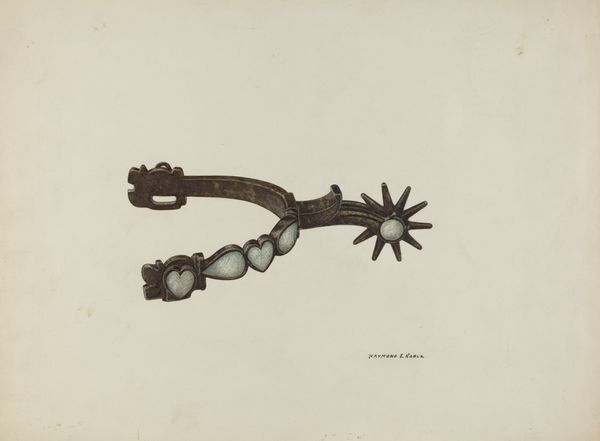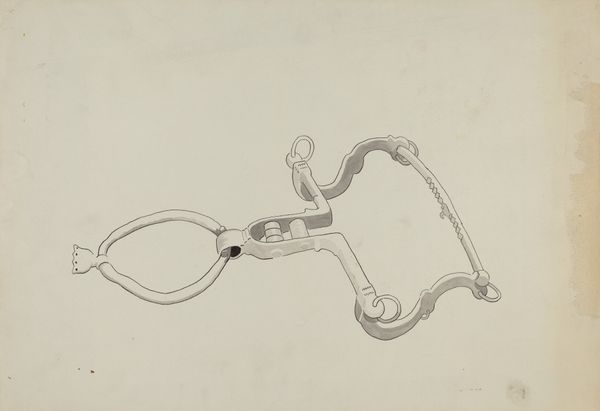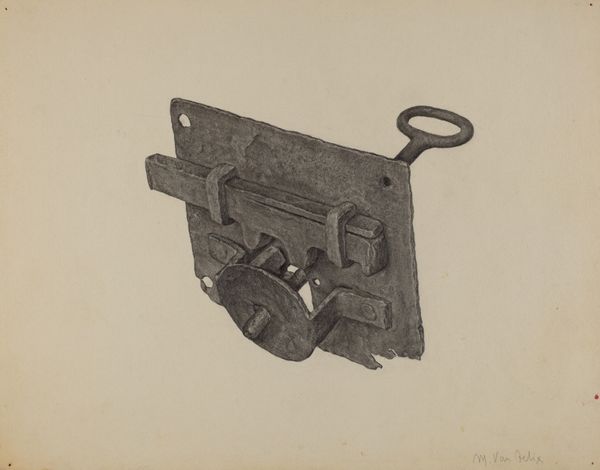
drawing, watercolor
#
drawing
#
etching
#
watercolor
#
ceramic
#
watercolour illustration
#
watercolor
#
realism
Dimensions: overall: 27.9 x 35.4 cm (11 x 13 15/16 in.)
Copyright: National Gallery of Art: CC0 1.0
Curator: Ah, the smell of old metal and untold stories. It always gets me. Editor: Well, the "Bar Bit" by Rose Campbell-Gerke, probably done sometime between 1935 and 1942, certainly has a weight to it. Is this piece rendered in watercolor? Curator: It looks like it. There are lovely, delicate lines describing something that is really quite brutal, when you think about it. Editor: Brutal because of its function, absolutely. As a drawing, I wonder about the function of depicting this object in the 1930s. Watercolor elevates something purely functional into the realm of art and domestic display. Curator: Yes, the juxtaposition. And consider the detail in the rust, the wear! The artist really dwelt on those elements, almost as if she's giving it a sort of… portrait treatment? It almost transcends its original purpose. Editor: Indeed, you are right! By rendering an object so loaded with material reality in watercolor, the artist is commenting on labor and the history embedded in this very ordinary object. Curator: Absolutely, and even perhaps our relationship with objects—we control them, they control us. Thinking of the horse forced to carry this bit. Editor: Well, certainly this specific tool allowed a more acute communication between a rider and their horse. One could almost describe it as a haptic technology. Curator: Haptic, that's clever. I am reminded also how it changes through its age, each scrape or wear represents work. Editor: Yes, and consider how commonplace horse tack was during its time. The drawing turns this into something to be studied and perhaps cherished? That broken link, now just ornamental… Curator: Leaving us with so many questions, isn't it? Still, what stays with me is the patience it must have taken to render these ordinary objects in watercolor, to lift this worn-out old metal object out of the muck and mire. Editor: Agreed. Campbell-Gerke prompts us to contemplate not just use, but also a history and transformation revealed in such subtle rendering and a close attention to the materials from which it's built.
Comments
No comments
Be the first to comment and join the conversation on the ultimate creative platform.

